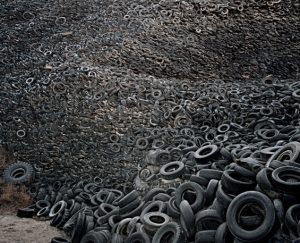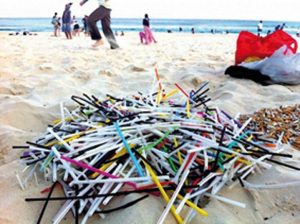THE QUESTIONS:
Do you ever wonder what the future holds? Have you ever dreamt up a wondrous future involving flying cars and robots? If so have you ever considered the transformation of the tire industry in that case? Would tires still exist? Where would all the tires go that already are on this earth? To answer this big series of questions first one would need to consider some facts.

THE FACTS:
According to data calculated by worldometers.info, there are approximately 63, million-plus cars produced as of this time of the year and it is expected to rise to probably 65-70 million by the end of just this year. The formal definition of a car is a vehicle that consists of no less than 4 wheels. This means that there need to be well over 252-280 million tires produced per year to supplement the supply of cars being produced. Assuming this number to be true over a ten year period of time, there would be over 680-700 million cars produced and over 2.8 billion tires produced in that ten-year lifespan. But in reality, with all the vehicles that use tires other than cars, such as planes, helicopters, motorcycles, ATVs, Lawn Mowers, bicycles, construction vehicles, and a hefty amount more utility items, 2.8 billion tires in a total of 10 years seems too small. In fact, according to Wikipedia.com, the number of tires produced in a year is calculated to be around 2.5 billion units. This means that for the ten years of producing tires and assuming the value is constant, the total amount of tires produced in 10 years should be about 25 billion units.

Perplexities:
Given some of the facts and calculations above you are probably wondering “why is this depressing?” or “that wasn’t happy”. Well, you are correct, but you should not get sad, for this is not the end of the story. The topic you should focus on is that of the three R’s [Reduce, Reuse, Recycle (Trademarks/Bank of America)]. There are many ways in which one can see this ending badly, and tires just being dumped in landfills or burnt (very hazardous). Instead, there are many ways to address the surplus of lone tires that would/could emerge from the future that abandons the tire as it is today.
Option 1: Reduce
There is one quote/demand/solution that could be said under this category “STOP PRODUCTION!!!” or at least something similar. In any case, the main focus of this ‘R’ is to prevent saturation. The world, though rich in resources, can only hold a limited amount of human waste. In order to successfully reduce waste, production would need to stop. However favorable this may seem, one must realize that the tire will need to be slowly phased out, instead of halted completely. The market would need to start transitioning to the new alternative before tires are to begin to disappear. This is the reduction side of the free market society. To look into a consumerist view of tire production reduction, you could ask “well how is the tire going to phase out if nobody buys a new alternative source of transportation?”. In doing this you would be correct to assume it is on the consumer’s job to support, through purchase, the new alternative transportation method. You would ask after this step “who is gonna be willing to buy this alternative?” and the answer to that should be you. Take the initiative and fight the rubber industry, while providing for the future. By buying into the new and underdeveloped form of alternative transportation you do two things: first, you lead by example thus increasing chances others may soon fall behind, and secondly, you have just given incentive to the rubber company to look into the increased demand for that newly bought alternative transport and made them rethink their push for tire production (lowered their production by lowering demand).
Another way to reduce the production of tires is through carpooling. Rather than buying a bunch of modern-day cars for personal use you can lower demand for cars by utilizing all of one car for multiple people to use. And if you have to ask “Is that good?” then yes it is good, because it means fewer cars are being used and thus fewer tires need to be supplied to the market.
More uses of trains and bikes and other alternative transports will be beneficial also because they would use less rubber and reduce the demand for cars and other vehicular transports.
You probably have more questions and those questions are welcomed, however, the main question coming from this is probably something like “well what else is there?” and/or “are there any other options?”. To answer the question you could focus on the second “R”, Reuse.
Option 2: Reuse
People always come up with ways to reuse materials. With products coming in and out of the market at alarming rates, and the tire industry expanding production, you might yourself ask “how am I going to reuse what I have now when I can just throw out this old thing (whatever it is) and get a new one for cheap?”. To this, one could answer by saying “well you could turn your item (in this case a tire) into a multitude of other useful tools.” There are many ways to recycle tires because tires are non-biodegradable and thus could not mix well into the soil, however, it can be meshed and mangled with a little, in order to create, in some cases, pretty unique and useful items for use in everyday life.
Some examples of reused tires can be seen below:
- Tire Swing – simple chain, or string, attached to a tire and hung on a tree, could be perfect for any backyard. Whether a child uses it to swing on or a dog uses it to jump through, a tire swing would be an excellent alternative use for the previously useless tire
- Tire Chairs – whether camping or hanging out in the backyard one can use almost anything like a place to sit. Tires, though packaged with a large hole in the center could provide enough space for one to sit on. Though most car tires might not work
- Tire Impact Barriers – Stacking bricks is one thing, stacking thick rubber tires is another. Using tires as a barrier for cars is a very useful thing. It is used in many forms of European and offroad racing already. It could be used as cones to some who are taking driving lessons as well
- Tire Excercise – Using tires to run through, lift with, or push on in the gym is a great way to reuse the tires. It really gives it a whole new purpose
The final comment on this section that you might be making to yourself is “this is a small list of ideas.” The use of tire rubber is up to the user. If the owner does not want to convert it personally, they can definitely donate or sell it to a person or organization that does find creative uses for the tire rubber so that the impact stays the same it just has before. A very simple one that was not mentioned above is literal reuse and maybe getting the best use out of a tire. Try to upkeep it so that you do not keep replacing tires because doing so would increase capital demand and thus increase supply.
Option 3: Recycle
Third and final “R”, Recycle is the most interesting. It involves not just repurposing the tire, but reshaping it and distorting it. The recycled tire is similar to the reuse of the tire, but it has more to do with changing its form completely. There are many instances of tires being used for alternative reasons and here are a few:
- Soles of Shoes – Though not entirely thought of as common, one might think of using tires to supplement the soles of shoes
- Alternative Fuel – According to a Wikipedia article on tire recycling, tires can be ground up and used for fuel. Making them a perfect example of using old items and incorporating them into new methods
- Speed Bumps – Tires can be used in portable speed bumps. This is effective at two things. Allowing cars to slow down, thus avoiding the risk of hitting an animal (humans included), and allows for that portability for placement to be effective
- Garden Hose – Though most people do not think of gardening their lawn with a tire, they very well might be. A tire’s ability to be broken down allows for its rubber to be repurposed for making a gardening hose
- Floor Mats – Floor mats are also items to which a tire could be transformed into
- Frisbee – The tire rubber could be used and compressed into a smoother and flatter disk. This disk could then be used to throw as it is now officially a frisbee
- Ball – Tire Rubber could be converted into balls, for fetch, for a catch or for other activities that involve balls
- As a water seal – tire rubber is very durable and able to keep water and liquid out. Using layers of tire rubber as a water seal on certain leaks could be beneficial
- Many more – the tire’s rubber is very usable in many fields of manufacturing and use and thus can serve many purposes outside of the ones mentioned above.
The Do Not of Recycling Tires:
- Bonfire – Do not use old tires as kindling for the fire/in a bonfire at all, unless in an industrial factory suitable for that kind of thing. The fumes and chemical makeup of the tire put it at risk of harming you and others. As a Wikipedia page about “tire fires” mentions, the smoke from burning tires contains “cyanide, carbon monoxide, sulfur dioxide, and products of butadiene and styrene. (Wiki, Tire Fire)
Result:
The end result you may ask is what? More rubberized products and fewer tires. Well in part this is true, at least to an extent literally. But in a broader context, it means less incentive to produce tires and more incentive to find alternatives to tire production and use. By finding alternative uses to tires, you and society can make a difference. Your contribution and possible cleanup could keep the ecosystems safe as well as keep the free market moving along to a better future.
Conclusion:
The tire industry is like a child, inefficient at most things, stubborn, and growing fast. But it is also like a child in that it learns and evolves into an older wiser being. With efforts to curb tire production through means of supply and demand alterations as well as through the three ‘R’s you can help create a brighter tomorrow and a better future.

Sources:
http://www.worldometers.info/cars/
https://en.wikipedia.org/wiki/Tire
https://en.wikipedia.org/wiki/Tire_recycling
https://en.wikipedia.org/wiki/Tire_fire
https://trademarks.justia.com/864/78/reduce-reuse-86478880.html
https://www.airspacemag.com/flight-today/13_sep2018-so-s-what-flying-cars-are-180969917/
http://mentalfloss.com/article/24845/what-seven-million-tires-look
http://mutiarakopi.blogspot.com/2018/09/building-brighter-future.html




